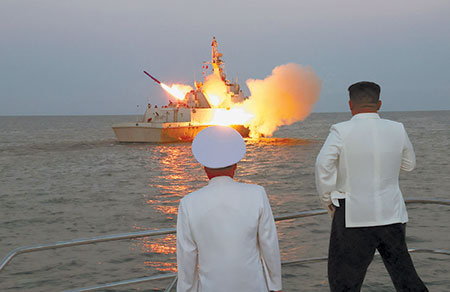
President Donald Trump is set to embark on a highly anticipated and strategically critical tour of Asia later this week, a journey shrouded in considerable White House secrecy regarding his precise itinerary and engagements. While details remain sparse, it is confirmed that the U.S. President’s diplomatic offensive will commence with a visit to South Korea, followed by his participation in the Asia-Pacific Economic Cooperation (APEC) summit, which South Korea will host. On the sidelines of this significant forum, intense speculation surrounds a potential groundbreaking meeting with Chinese President Xi Jinping, with talk of a possible “fantastic deal” emerging from their discussions. An even more dramatic prospect captivating global media attention is the unconfirmed but not-excluded possibility of contact between President Trump and North Korean leader Kim Jong Un in the demilitarized zone at Panmunjom. This unprecedented engagement underscores the high stakes of international diplomacy at play.
However, the delicate balance of Trump’s high-risk mission has been immediately complicated. Reuters reports that North Korea has already tested several short-range ballistic missiles, a move seen as a direct challenge. This act violates United Nations Security Council prohibitions, which have been in place for over a decade, providing a consistent point of pressure from the U.S. and its allies against Pyongyang. Moreover, these launches mark the first missile tests since the inauguration of South Korea’s new president, Lee Jae-Myung, adding a layer of immediate tension to regional dynamics.
This aggressive posture from Pyongyang raises a crucial question: What does North Korea intend? While Kim Jong Un has not publicly expressed a desire to re-engage with Trump, as he did during the U.S. president’s first term, he has previously spoken warmly of their past encounters. The primary obstacle to renewed dialogue remains Washington’s steadfast demand for North Korea’s complete denuclearization. Kim, however, has consistently rejected this condition as unacceptable, signaling that progress would only be possible if Trump were to drop this insistence. This creates a strategic impasse, where the next move is firmly on Trump’s diplomatic chessboard.
American experts offer varied perspectives on the likelihood of a breakthrough. Victor Cha, a prominent strategic weapons specialist, suggests a pragmatic shift might be necessary. “It’s not at all unthinkable,” he posits, “that Trump could declare in Washington that denuclearization remains our policy’s goal, and then proceed to Panmunjom and acknowledge, ‘There’s nothing we can do, Kim possesses nuclear weapons.’” Such an acknowledgment, Cha argues, could be a shrewd move, particularly given the multitude of other pressing issues the U.S. President faces across Asia. Andrew Yeo, a senior fellow at the Brookings Institution, also views an agreement with Kim as a positive development, though he cautions that the tight schedule – Trump’s visit to South Korea is limited to just two days and one night – might constrain the time needed for such complex deliberations.
Despite the drama surrounding North Korea, the anticipated talks between President Trump and President Xi Jinping remain a cornerstone of the tour. The White House chief has, perhaps for dramatic effect, suggested the possibility of a “fantastic deal” with his Chinese counterpart. If this refers to de-escalating the ongoing trade war, which has caused considerable anxiety among businesses in both nations, it would undoubtedly represent a significant step forward. Yet, the rivalry between China and the U.S. extends far beyond economics, encompassing a fundamental struggle for global influence. The core question looms: will the U.S. cede its role as global hegemon to China, or will Beijing and Washington negotiate a new division of spheres of influence?
This geopolitical contest has led some, like the celebrated British filmmaker and insightful commentator Richard Attenborough, to provocatively argue that the U.S. has already lost this bloodless battle. Attenborough contended that the U.S. placed its bets on lawyers and quick profits, while China invested in the long game, prioritizing engineers and industrial production. In this “new Cold War” scenario, he suggested, China is poised to emerge victorious.
Beyond the headline-grabbing potential meetings, President Trump’s Asian itinerary extends further. He is scheduled to visit Japan, where he is expected to engage warmly with its new Prime Minister, Sanae Takaichi, who has consistently advocated for strengthening the military alliance with the United States. The tour’s final leg will take the President to Malaysia for the Association of Southeast Asian Nations (ASEAN) summit. Concurrently, Kuala Lumpur will host high-level conferences between ASEAN and its major economic partners, including the U.S., Japan, and China. President Trump previously claimed credit for mediating a ceasefire along the disputed border between Cambodia and Thailand during his tenure. It is anticipated that he, or his officials in Malaysia, will endeavor to solidify this truce into a lasting agreement, aiming to ensure long-term stability in this sensitive region.
